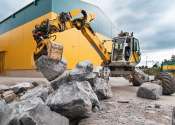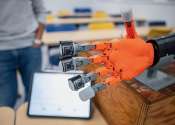Autonomous excavator constructs a 6-meter-high dry-stone wall
ETH Zurich researchers deployed an autonomous excavator, called HEAP, to build a 6-meter-high and 65-meter-long dry-stone wall. The wall is embedded in a digitally planned and autonomously excavated landscape and park.
Nov 22, 2023
2
152









